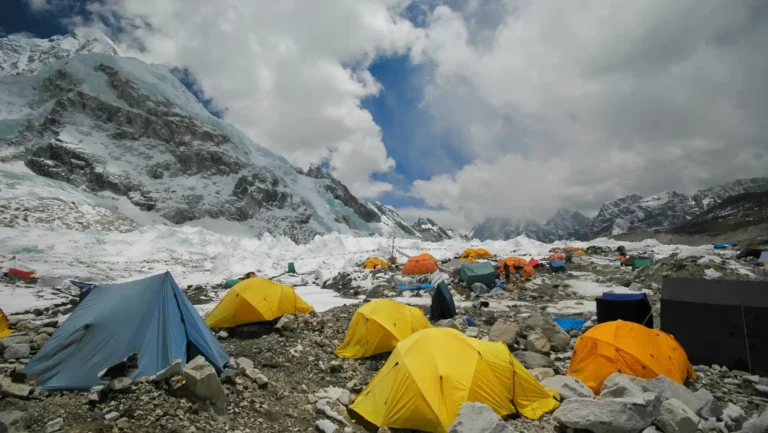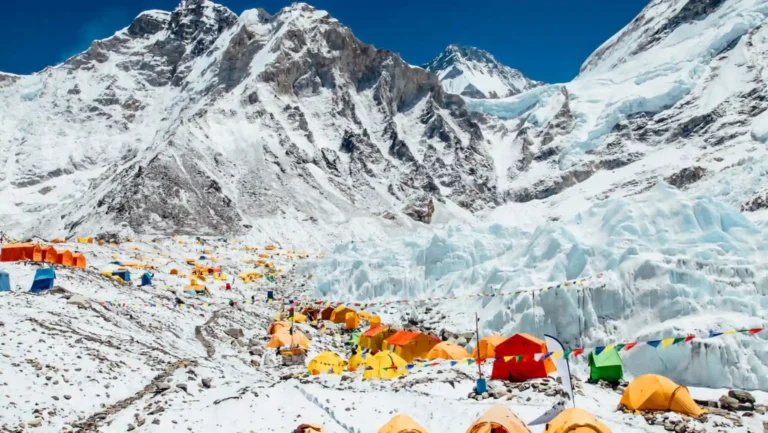When venturing into the harshest environments on Earth—whether it’s the icy slopes of the Himalayas or the windswept plateaus of Antarctica—a reliable tent can mean the difference between survival and disaster. For adventurers and climbers tackling extreme weather conditions, Everest tents are renowned for their ability to withstand subzero temperatures, relentless winds, and heavy snowfall.
Designed to serve as a lifeline in the world’s toughest terrains, these tents are trusted by explorers across the globe.
This article highlights the best Everest tents built for extreme weather, showcasing their innovative features, durable materials, and performance in the most demanding conditions.
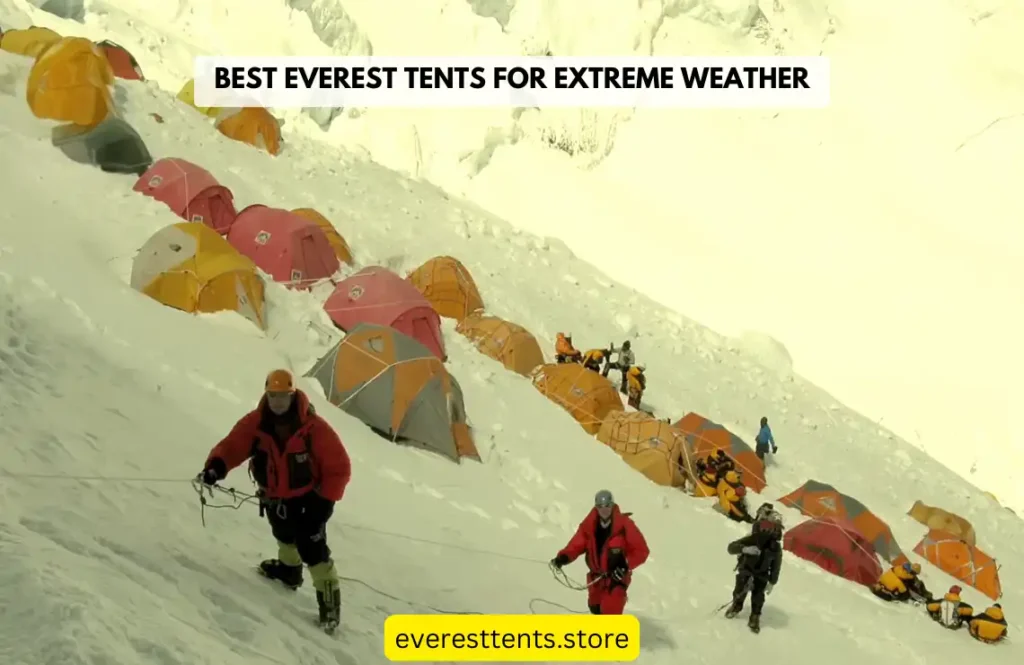
What Makes an Everest Tent Suitable for Extreme Weather?
Choosing the right tent for extreme weather isn’t just about comfort—it’s about survival. A true Everest tent must endure the harshest conditions, from brutal winds to heavy snowfall, while keeping climbers safe and insulated. Here’s what makes these tents stand out:
Durability & Material
The materials used in an Everest tent define its resilience. High-quality fabrics like ripstop nylon and Dyneema provide exceptional tear resistance while remaining lightweight.
These materials are engineered to withstand high-altitude UV exposure, prevent snow buildup, and maintain structural integrity in subzero temperatures. Reinforced seams and waterproof coatings further enhance protection against the elements.
Wind & Snow Resistance
Mountains are notorious for their unpredictable, hurricane-force winds. That’s why Everest tents typically feature aerodynamic dome-shaped designs that allow wind to pass over them rather than push against them.
Sturdy aluminum or carbon fiber poles create a rigid frame that can withstand intense pressure, while multiple guylines and reinforced anchor points help secure the tent in deep snow or rocky terrain.
Insulation & Ventilation
While insulation is crucial for warmth, ventilation is just as important to prevent condensation buildup inside the tent. Double-wall construction helps retain heat while allowing moisture to escape, reducing the risk of frost forming on the interior.
Adjustable ventilation ports and mesh panels improve airflow, ensuring climbers stay dry and comfortable without compromising warmth.
Weight & Portability
Mountaineers must balance strength with weight efficiency. A reliable Everest tent needs to be light enough for high-altitude ascents but sturdy enough to endure prolonged exposure to extreme conditions.
Many top-tier tents weigh between 6 to 10 pounds, making them manageable for long expeditions while still offering top-tier protection.
Everest tents are designed for survival in the most challenging environments on Earth. With these essential features, they provide the durability, stability, and protection needed to endure nature’s harshest elements.
Planning to camp at Everest Base Camp? Don’t miss our in-depth guide on the Best Everest Base Camp Tents — featuring trusted high-altitude shelters built to handle the brutal Himalayan environment. It’s a must-read if you want to stay warm, safe, and protected at base camp.
🎥 Video: Why Choosing the Right Tent for Everest Matters
Before diving into our top picks for extreme weather tents, take a moment to watch this short video. It highlights what makes Everest-ready tents so essential — and why having the right gear can be the difference between safety and struggle at high altitudes.
👉 Press play to get a powerful visual overview of the challenges mountaineers face — and how Everest Tents is built to meet them.
Top 5 Best Everest Tents for Extreme Weather
Not all tents are built to handle the extreme conditions of high-altitude mountaineering. When facing the world’s harshest climates, choosing the right Everest tent can be the difference between safety and disaster.
Below are five of the best Everest tents, carefully selected for their durability, insulation, wind resistance, and weight.
1. The Mountain Hardwear Trango 2 (Premium Pick)
Best for: High-altitude climbers facing extreme cold & hurricane-force winds.
Why It Stands Out
The Mountain Hardwear Trango 2 has earned its reputation as one of the best four-season expedition tents on the market. Engineered for high-altitude mountaineering, it is trusted by climbers tackling Everest, K2, and Denali.
The combination of rugged materials, reinforced poles, and a stormproof design makes it a top-tier choice for extreme weather.
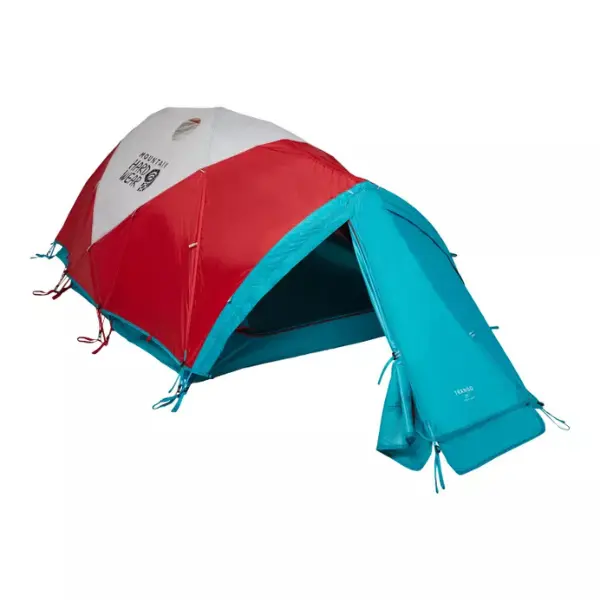
Key Features:
✅ Durable Materials – Built with 40D ripstop nylon and a 70D nylon taffeta floor, this tent is designed to resist rips, UV exposure, and extreme cold.
✅ Reinforced DAC Poles – The DAC Featherlite NSL aluminum poles provide maximum stability against strong winds and heavy snowfall.
✅ Snow Skirts & Full Vestibule – A built-in snow skirt helps keep wind-driven snow from entering, while the vestibule offers extra storage space for gear.
✅ Double-Wall Construction – This prevents interior condensation buildup, keeping you dry and warm.
✅ Ventilation System – Adjustable vents ensure airflow without sacrificing warmth.
Where to Buy:
🔗 Check Price on EverestTents.store
2. The ALPS Mountaineering Tasmanian 3 (Best Value)
Best for: Budget-conscious adventurers needing solid performance without breaking the bank.
Why It Stands Out
For climbers who need a four-season tent that balances affordability with durability, the ALPS Mountaineering Tasmanian 3 is a solid choice.
While it may not match the extreme resilience of premium expedition tents, it still holds up well against snow, wind, and freezing temperatures, making it ideal for those tackling high-altitude adventures on a budget.
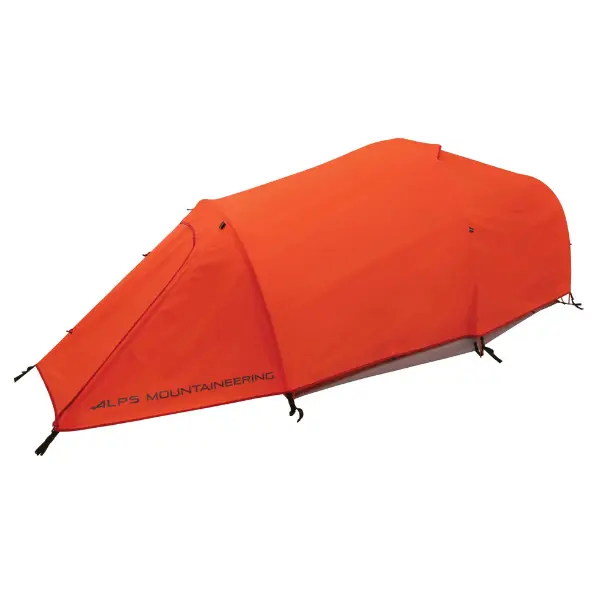
Key Features:
✅ Waterproof & Snow-Resistant – The 75D polyester fly is PU-coated for superior water resistance, keeping you dry in snowstorms and heavy rain.
✅ Quick & Easy Setup – Thanks to the two-pole design with a free-standing structure, pitching this tent is straightforward, even in harsh conditions.
✅ Wind Resistance – Aluminum poles and a geodesic dome design help withstand strong winds.
✅ Spacious Interior – Offers two vestibules for extra gear storage and a comfortable fit for three people.
✅ Ventilation System – Adjustable vents prevent condensation buildup inside.
Where to Buy:
🔗 Check Price on EverestTents.store
3. Black Diamond Eldorado (Best Lightweight Option)
Best for: Climbers who need an ultralight, weatherproof shelter without sacrificing durability.
Why It Stands Out
When every ounce matters in extreme alpine conditions, the Black Diamond Eldorado is a go-to choice for mountaineers who demand a lightweight yet highly durable tent.
Designed for high-altitude expeditions, this single-wall tent offers robust weather protection while being compact enough for long treks.
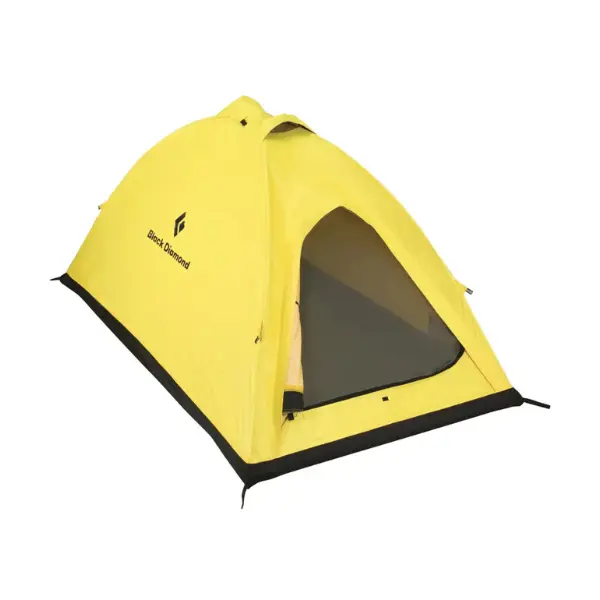
Key Features:
✅ Ultralight Design – Weighing just 4 lbs 8 oz, it’s one of the lightest four-season tents, making it ideal for fast-moving climbers.
✅ Weatherproof Construction – Made with ToddTex fabric, a breathable yet waterproof material that keeps condensation minimal while shielding against heavy snow and rain.
✅ High-Altitude Performance – Designed specifically for expedition use, providing a solid shelter in extreme mountain environments.
✅ Reinforced Seams & Strong Poles – Features DAC Featherlite aluminum poles, ensuring excellent stability against high winds.
✅ Compact & Space-Efficient – The single-wall design eliminates the need for a separate rainfly, reducing bulk without compromising on protection.
Where to Buy:
🔗 Check Price on EverestTents.store
4. MSR Remote 2 (Best for Snow & Ice Conditions)
Best for: Expeditions in deep snow and glaciers, where insulation, stability, and ventilation are crucial.
Why It Stands Out
The MSR Remote 2 is a four-season expedition tent built specifically for harsh winter conditions and deep snow environments.
Designed to keep mountaineers warm and safe in the coldest, windiest terrains, this tent offers exceptional wind resistance, insulation, and snow-handling capabilities.
It’s a top choice for climbers tackling glaciated peaks like Everest and K2.
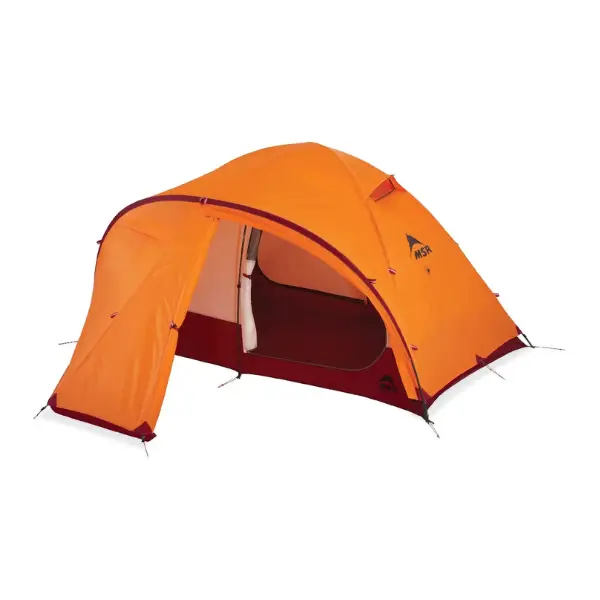
Key Features:
✅ Four-Season Design – Built for high-altitude expeditions, it offers superior insulation and durability.
✅ Snow Flaps & Reinforced Frame – The snow skirts prevent drift buildup, while the Easton Syclone composite poles ensure maximum wind resistance.
✅ Double-Wall Construction – Reduces condensation while maintaining warmth in subzero temperatures.
✅ Large Vestibules & Interior Space – Offers plenty of gear storage and comfortable sleeping quarters for two climbers.
✅ Excellent Ventilation System – Features mesh panels and adjustable vents to prevent moisture buildup.
Where to Buy:
🔗 Check Price on EverestTents.store
5. The North Face VE 25 (Best for Group Climbs)
Best for: Teams or groups needing a spacious, highly durable tent for extreme weather conditions.
Why It Stands Out
The North Face VE 25 is a legendary expedition tent designed to accommodate three climbers while providing unmatched protection against harsh alpine environments.
Whether battling high winds on Everest or enduring heavy snowfall in the Karakoram, this tent offers ample space, reinforced construction, and reliable storm-proofing for serious mountaineering teams.
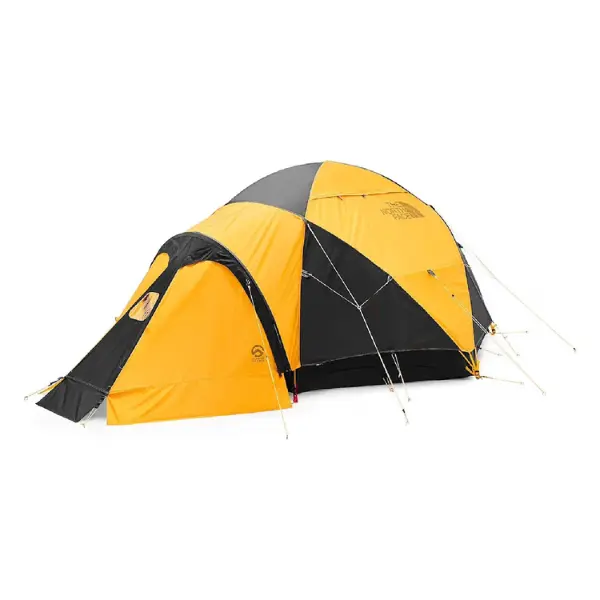
Key Features:
✅ Multi-Person Capacity – Comfortably fits three climbers with gear storage space.
✅ Heavy-Duty Fabric – Made with 40D ripstop nylon with a polyurethane coating, providing superior tear resistance and durability.
✅ Reinforced DAC Featherlite Poles – Strong yet lightweight poles designed to withstand intense winds and snow loads.
✅ Stormproof & Waterproof Design – Fully taped seams, a full-coverage rainfly, and a snow skirt keep water and snow out.
✅ Dual Vestibules & Large Interior – Vestibules on both sides provide extra gear storage, keeping sleeping areas uncluttered.
Where to Buy:
🔗 Check Price on EverestTents.store
Buying Guide: How to Choose the Right Everest Tent
Selecting the right Everest tent is crucial for ensuring safety, comfort, and survival in the world’s harshest environments.
With extreme cold, UV exposure, high winds, and heavy snowfall, you need a tent that aligns with your expedition needs. Below are the key factors to consider before making a purchase.
Weather Resistance Ratings: Understanding Seasonality
Everest tents are built to handle severe alpine conditions, but not all tents offer the same level of protection.
- 3-Season Tents: Designed for spring, summer, and fall, these tents prioritize ventilation and lightweight materials. They work well for moderate mountain climates but aren’t suitable for extreme cold or heavy snow.
- 4-Season Tents: These are true expedition-grade tents, engineered for winter, high-altitude, and extreme weather conditions. They feature:
✅ Stronger materials (ripstop nylon, Dyneema)
✅ Reinforced poles to withstand high winds
✅ Snow skirts & sealed seams for insulation
✅ Reduced mesh panels to trap heat
For Everest and similar extreme environments, a 4-season tent is non-negotiable.
Tent Capacity & Space: Solo vs. Group Needs
The number of people in your expedition directly influences the type of tent you should get.
- Solo Climbers: A 1-person or 2-person tent is ideal for cutting weight and maintaining portability.
- Small Teams (2-3 Climbers): A 3-person tent balances space and warmth while remaining compact.
- Large Expeditions (4+ Climbers): A multi-person tent with extra vestibules provides room for sleeping, gear storage, and sheltering during storms.
💡 Tip: If you’re climbing solo but expect extreme weather, consider a 2-person tent for extra insulation and storage space.
Setup & Ease of Use: Freestanding vs. Non-Freestanding Tents
Mountaineers often set up tents in difficult terrain, including snow, ice, and rocky slopes. The tent’s setup style impacts stability and convenience.
- Freestanding Tents (Recommended)
✅ Stand on their own without stakes
✅ Easier to set up on rocky or icy surfaces
✅ More wind-resistant when secured properly - Non-Freestanding Tents
❌ Require staking for full structure support
❌ Not ideal for hard-packed snow or rocky terrain
✅ Can be lighter and more compact
For Everest-like conditions, a freestanding tent with sturdy pole architecture is the best choice.
Price vs. Performance: When to Invest in High-End Models
Expedition tents vary significantly in price. While budget-friendly options exist, cutting corners on durability, insulation, and weatherproofing can be dangerous in extreme conditions.
💰 Budget Tents ($150 – $600):
✔ Good for moderate winter camping & alpine adventures
✔ May lack reinforced poles, snow skirts, or premium fabric
💎 Premium Expedition Tents ($800 – $1,500+):
✔ Designed for high-altitude mountaineering & Everest-level conditions
✔ Offer advanced insulation, storm-proofing, and long-term durability
✔ Trusted by professional climbers & expedition teams
When should you invest in a premium tent?
- If you’re climbing in extreme conditions (Everest, K2, Denali)
- If you value longevity, a high-end tent can last for years
- If your safety & survival depend on it
Choosing the right Everest tent is about balancing your specific expedition needs with weather resistance, space, ease of use, and durability.
If you’re tackling extreme conditions, investing in a high-quality, 4-season expedition tent will give you the confidence to face the harshest elements.
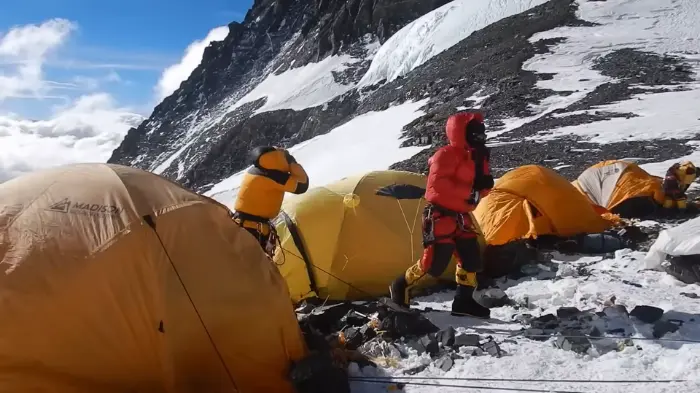
FAQs About Everest Tents
When investing in an Everest tent, you may have several questions about its durability, usage, and maintenance. Below, we answer some of the most common queries to help you make an informed decision.
1. What is the difference between an Everest tent and a regular camping tent?
While both Everest tents and regular camping tents provide shelter, they are built for entirely different environments.
- Everest Tents
✅ Designed for high-altitude, extreme cold, and heavy snow
✅ Made with reinforced materials, double-wall construction, and stormproof poles
✅ Include snow skirts, wind-blocking designs, and superior insulation
✅ Can withstand hurricane-force winds - Regular Camping Tents
❌ Built for mild to moderate weather conditions
❌ Often single-wall with mesh panels, making them unsuitable for extreme cold
❌ Use lighter materials that won’t hold up to high winds or heavy snow
💡 Bottom Line: If you’re camping in high-altitude, subzero, or stormy environments, an Everest tent is essential.
2. Can Everest tents withstand hurricane-level winds?
Yes, Everest tents are designed to endure extreme winds, often exceeding 80-100 mph, similar to hurricane-force winds.
- How do they achieve this?
✅ Geodesic & dome designs allow wind to flow over instead of pushing against the tent.
✅ Reinforced poles (DAC aluminum, carbon fiber) prevent collapse.
✅ Multiple guylines & anchor points ensure stability in high winds.
However, no tent is indestructible—proper pitching, anchoring, and site selection play a crucial role in maximizing wind resistance.
3. Are Everest tents suitable for casual camping?
While Everest tents offer the highest level of protection, they may not be ideal for casual campers due to:
❌ Weight & Bulk: These tents are heavier than regular camping tents, making them unnecessary for lightweight trips.
❌ Price: High-quality Everest tents cost significantly more than standard camping tents.
❌ Limited Ventilation: Everest tents prioritize warmth and insulation over airflow, which can make them uncomfortable in warm climates.
💡 When is an Everest tent useful for casual camping?
- Winter camping in extreme cold
- Backcountry trips where weather conditions may turn severe
For mild weather and short trips, a three-season tent is usually sufficient.
4. How do I maintain an Everest tent for long-term use?
To ensure your Everest tent lasts for years, proper maintenance is key:
✅ Cleaning & Storage:
- Shake out snow, dirt, and debris after each trip.
- Air dry completely before storing to prevent mildew or mold.
✅ Waterproofing & Repairs:
- Reapply DWR (Durable Water Repellent) coatings periodically.
- Inspect zippers, seams, and poles for wear and tear.
- Patch small holes using repair tape designed for tent fabric.
✅ Proper Packing:
- Avoid storing the tent compressed for long periods—loose storage prolongs fabric life.
- Keep poles separate from the fabric to prevent punctures.
💡 Investing in regular maintenance will extend your tent’s lifespan and ensure it remains reliable for future expeditions.
Conclusion
Surviving and thriving in extreme weather conditions requires more than just experience and skill—it demands the right gear, and an Everest tent is at the core of your protection.
Whether you need lightweight portability, stormproof durability, or extra insulation, the tents we’ve covered offer the best options for tackling high-altitude expeditions.
To recap, here are our top picks for Everest tents:
🏔 Mountain Hardwear Trango 2 – Best for high-altitude climbers facing extreme cold & hurricane-force winds.
🏔 ALPS Mountaineering Tasmanian 3 – Best budget-friendly option without sacrificing protection.
🏔 Black Diamond Eldorado – Best lightweight tent for fast-paced alpine climbs.🏔 MSR Remote 2 – Best for snow & ice conditions with exceptional insulation.
🏔 The North Face VE 25 – Best for group expeditions, offering ample space and durability.
Each of these tents is designed to handle subzero temperatures, heavy snowfall, and high-altitude winds, ensuring that your adventure remains safe and successful.
👉 Explore our full collection of Everest tents at EverestTents.store and find the best tent for your expedition.
Have questions or need expert recommendations? Please drop a comment below, and let’s help you choose the perfect tent for your next adventure!
